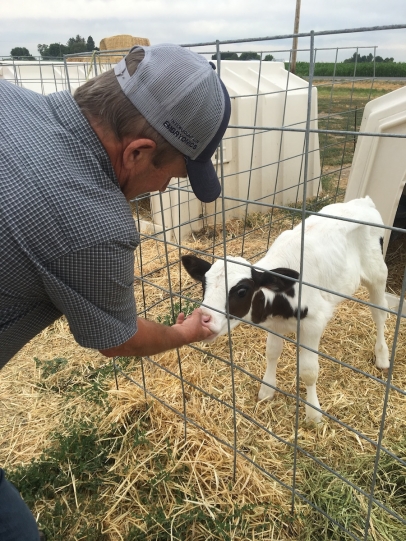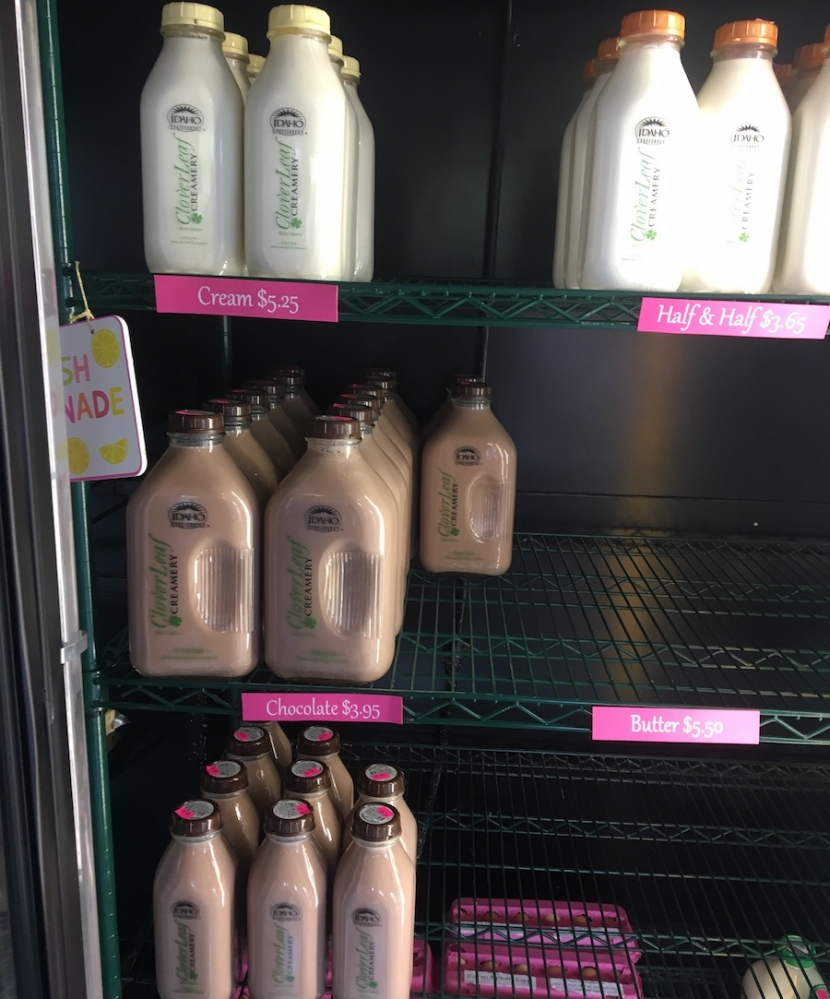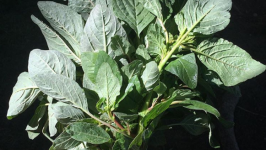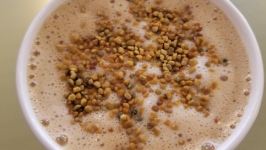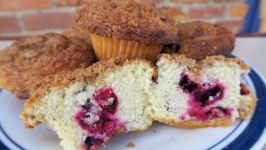Land of Milk and Honey
The smell of fresh-made waffle cones drifts along a Buhl city block, luring passersby into the 1930s building occupied by Cloverleaf Creamery. Dainty metal ice cream parlor chairs and washes of pinks and other pastels bring visitors back to the days of soda shops and car hops, when things seemed simpler, including the food.
Bill and Donna Stoltzfus keep it simple—or, as Bill says, “real”—at the creameryand on their dairy just outside of town that supplies the milk for ice cream and butter. They call the cows by name. Sixty-year-old equipment, some foraged from the old Idaho state prison decades ago, separates the cream, cleans and sterilizes reused glass containers and bottles milk that tastes like milk used to taste (if you can remember back that far).
The Stoltzfuses started doing milk the old school way before old school became cool. They keep ice cream ingredients simple, graze cows on organic grassy pastures, pasteurize with cold equipment and eschew chemicals and unnecessary antibiotics. They produce milk in ways our great-grandparents might recognize.
“We do things as clean as we can,” Bill says. “Natural is the real key.”
They keep things natural and prefer the simple ways for what old-fashioned dairy production does for taste and the environment. Your taste buds and the bees should thank them.
As food production went commercial and industrial over the past century, mass production pumped out cheap meat, fruits, vegetables and grains thanks to the heavy-handed use of pesticides and herbicides. Then the humble bumble bee and its fellow pollinators began dropping like flies. This, we know.
Mass production of meat, dairy products and eggs also translated into massive deposits of cow dung, pig poo and chicken shit. And where there’s feces, there’s flies.
Food production that once looked like the Stoltzfus family dairy in South Central Idaho morphed into concentrated animal feeding operations and packed chicken warehouses. Much to the flies’ delight, these oozed animal waste into festering piles and rank lagoons.
The dung attracted the flies, which gave rise to one of industrial food production’s dirty little secrets: aggressive abatement neurotoxic methods that don’t distinguish between flies, bees or a beautiful butterfly.
We often think of pesticides and herbicides that keep insects from devouring fruits and vegetables as the bane of pollinators’ ability to thrive but dairies, particularly large-scale operations, threaten their populations from the cultivation of grass that goes into a cow’s mouth to the toxic efforts to keep animal feces fly free. Conventional dairy farms tend to have higher stocking levels, which results in higher grazing levels, says Eileen Power, visiting researcher in the School of Natural Sciences at Trinity College Dublin in Ireland.
“Higher grazing levels reduce plant diversity as the broadleaved [non-grass] plants don’t grow back after being repeatedly munched on. Grass species diversity reduces too as only the most fast-growing species dominate. Often, also, fields are reseeded with one or two specially bred grass species,” she says.
The chemical fertilizers conventional farmers apply to grass fields to increase nutrient levels can also choke native plants, which tend to prefer low-nutrient conditions.
“This all results in a monocultural grass sward with no flowers—essentially a green desert, from a pollinator perspective,” Power says.
Dump a bunch of cow manure on this monoculture and you’ve just delivered the busy bee its worst nightmare.
If you look at the arsenal of chemicals used to control flies at large-scale dairies, chicken production operations or egg plants, chances are you’ll find gallons of organophosphate and neonicotinoids, a family of pesticides most highly linked to bee colony collapse. When sprayed around manure, they effectively kill flies and their larvae, squelching the pesky pest problem by targeting the nervous system. The neurotoxins are so successful in their insect lethality that the European Union banned the chemicals due to their debilitating effect on bee populations. A 2013 study published in Nature Communications found that even at sublethal levels, organophosphate and neonicotinoids cause cognitive impairment in bees. And a novel September study in Chemosphere found significantly reduced visual acuity and correct color choices in wild Asian honey bees exposed to pesticides.
“I certainly would not want to be one of the people spraying organophosphate,” says Jim Skinner, president and CEO of Terragena, an organic farm and livestock pest control company that specializes in natural, non-toxic biopesticides and natural insect predators.
The chemicals cause neurotransmission disruptions and epileptic activity in bees and were some of the most widely used pesticides through the 21st Century. The U.S. Environmental Protection Agency placed residential bans on the use of organophosphates and new restrictions on the use of some organophosphates to protect agricultural workers. But the use of the chemicals remains widespread and 36 types of organophosphates remained registered or use in 2013.
“Safety is an issue both for the applicators and the environment,” Skinner says.
Terragena sells non-toxic abatement alternatives that includes the natural parasite Beauveria bassiana, which when applied to animal waste targets only the insects that hold a fondness for manure.
“It’s a contact sport,” Skinner says.
And since butterflies and bees prefer the sweet and colorful to the festering and brown, they tend to miss any Beauveria bassiana encounters, Skinner says.
Dairy producers like the Stoltzfuses take a proactive approach that limits the need to use chemical abatement but if the flies get overwhelming they use organic organophosphate and neonicotinoids alternatives.
“The big thing is keeping things dry and clean,” says Stoltzfus, who pulls thistles at the dairy by hand. “If you don’t give it a breeding ground, you don’t have a problem.”
It’s not always easy to know how producers abate waste-related pests. Organic certifications restrict food exposure to chemicals along the supply chain, but treatments applied to animal waste are not always apparent. And producers that use organic fly abatement methods don’t always apply for certification, choosing instead to save administrative time and expenses. It’s an ask-your-farmer kind of disclosure, Skinner says.
“It would take some sort of movement” to get the public to think about waste fly abatement, Skinner says.
“If you think about antibiotic-free food products, that took decades to become a movement. To have a similar non-toxic, chemical free [manure fly abatement] movement, people would have to understand why it’s important,” Skinner says.
“I would love to see people stop using the chemicals.”
If you need another reason to name a chicken or visit a local dairy, think of the humble bee. They’re important.
And consider your backyard chicken coop, that old-fashioned creamery and a stop at the local family dairy as your radical contribution to the bee movement.


